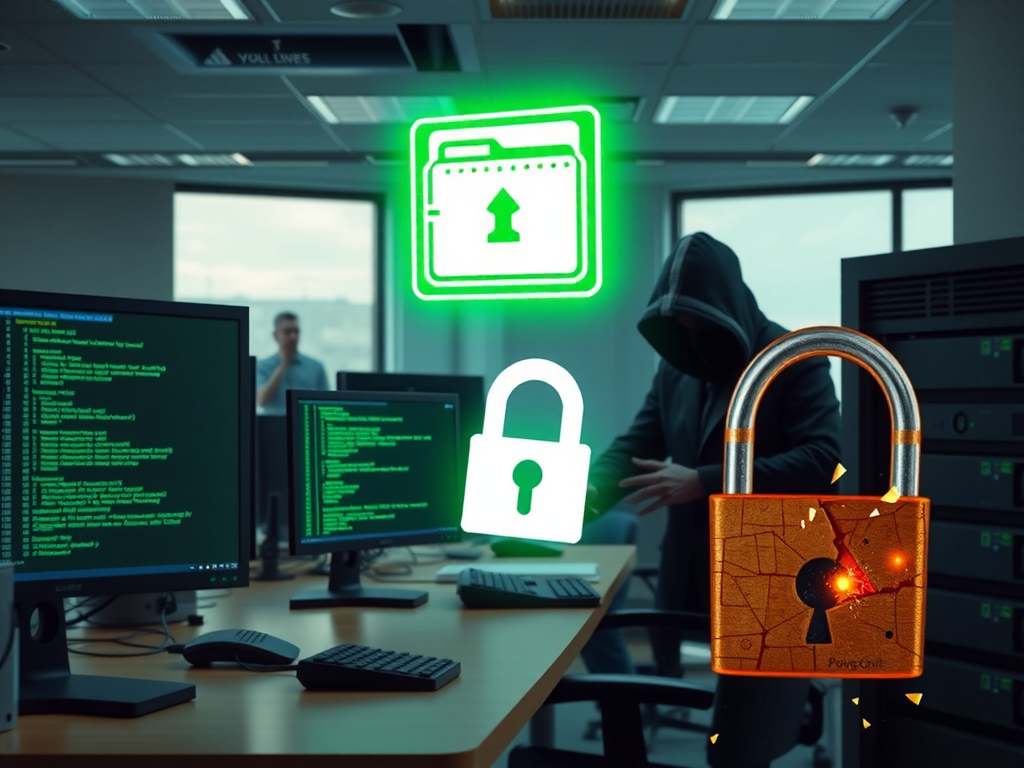Threat Report
PS1Bot Malware Framework A sophisticated multi-stage malware implemented in PowerShell and C#
Threat Overview
A new threat report published by AlienVault on August 12, 2025, highlights a malvertising campaign distributing PS1Bot, an advanced multi-stage malware framework. This malware is designed with modular capabilities that enable information theft, keylogging, reconnaissance, and persistent system access. The framework minimizes artifacts and employs in-memory execution techniques to remain stealthy. Active since early 2025, PS1Bot’s information stealer specifically targets cryptocurrency wallets and uses wordlists to identify files containing passwords and seed phrases.
The campaign overlaps with previously reported Skitnet activities and utilizes similar command-and-control (C2) infrastructure. Delivery mechanisms involve compressed archives with obfuscated scripts that lead to PowerShell modules for antivirus detection, screen capture, data theft, keylogging, and system information collection. Persistence is achieved through manipulation of the startup directory.
Detailed Analysis
PS1Bot is a sophisticated malware framework implemented in PowerShell and C#. Its modular design allows it to perform various malicious activities, including information theft, keylogging, reconnaissance, and maintaining persistent access to compromised systems. The use of PowerShell and C# makes the malware versatile and capable of executing complex commands on infected machines.
The malware minimizes its footprint by using in-memory execution techniques, which make it difficult for traditional antivirus solutions to detect. This stealthy approach allows PS1Bot to operate undetected for extended periods, increasing the likelihood of successful data exfiltration and long-term system compromise.
PS1Bot’s information stealer module is particularly dangerous as it targets cryptocurrency wallets. By using wordlists to identify files containing passwords and seed phrases, the malware can steal sensitive information that leads to financial loss for victims. The overlap with Skitnet activities suggests a coordinated effort by threat actors to maximize the impact of their campaigns.
The delivery mechanism involves compressed archives containing obfuscated scripts. These scripts are designed to evade detection by security tools and lead to the execution of PowerShell modules. Once executed, these modules perform various malicious activities, including antivirus detection evasion, screen capture, data theft, keylogging, and system information collection.
Persistence is established through manipulation of the startup directory, ensuring that the malware remains active even after system reboots. This persistence mechanism makes it challenging for users to remove the malware without specialized tools or knowledge.
Operational Security Measures
While PS1Bot implements various stealth techniques, its reliance on known delivery mechanisms and C2 infrastructure can be exploited by security analysts. By monitoring for suspicious network traffic and unusual system behavior, organizations can detect and mitigate the threat posed by this malware. Additionally, the use of similar C2 infrastructure to previously reported Skitnet activities provides an opportunity for cross-referencing and identifying related threats.
Recommendations for Mitigation
Organizations can implement several measures to mitigate the threat posed by PS1Bot. These include:
- Network Segmentation: Implement network segmentation to limit the lateral movement of attackers within the network. This can be achieved by dividing the network into smaller segments and implementing strict access controls between segments.
- Regular Updates: Keep all systems and software up to date with the latest security patches. This includes operating systems, applications, and antivirus solutions. Regular updates help to address known vulnerabilities that can be exploited by malware like PS1Bot.
- Intrusion Detection Systems: Deploy intrusion detection systems (IDS) to monitor network traffic for signs of malicious activity. IDS can help detect and alert on suspicious traffic patterns, allowing organizations to respond quickly to potential threats.
- Endpoint Protection: Implement endpoint protection solutions to detect and block malware on individual devices. Endpoint protection can help prevent the initial infection and limit the spread of malware within the network.
- Security Awareness Training: Provide regular security awareness training to employees to help them recognize and report potential security threats. This can include phishing simulations, training on recognizing suspicious emails, and best practices for password security.
- Regular Backups: Maintain regular backups of critical data to ensure that it can be restored in the event of a ransomware attack or data loss. Backups should be stored offline or in a separate network segment to prevent them from being encrypted or deleted by the malware.
- Incident Response Plan: Develop and maintain an incident response plan to ensure that the organization can respond quickly and effectively to security incidents. The plan should include steps for containing the threat, investigating the incident, and restoring affected systems.
By implementing these measures, organizations can significantly reduce the risk of falling victim to PS1Bot and other sophisticated malware threats.
External References
For additional information, please refer to the following external references:


